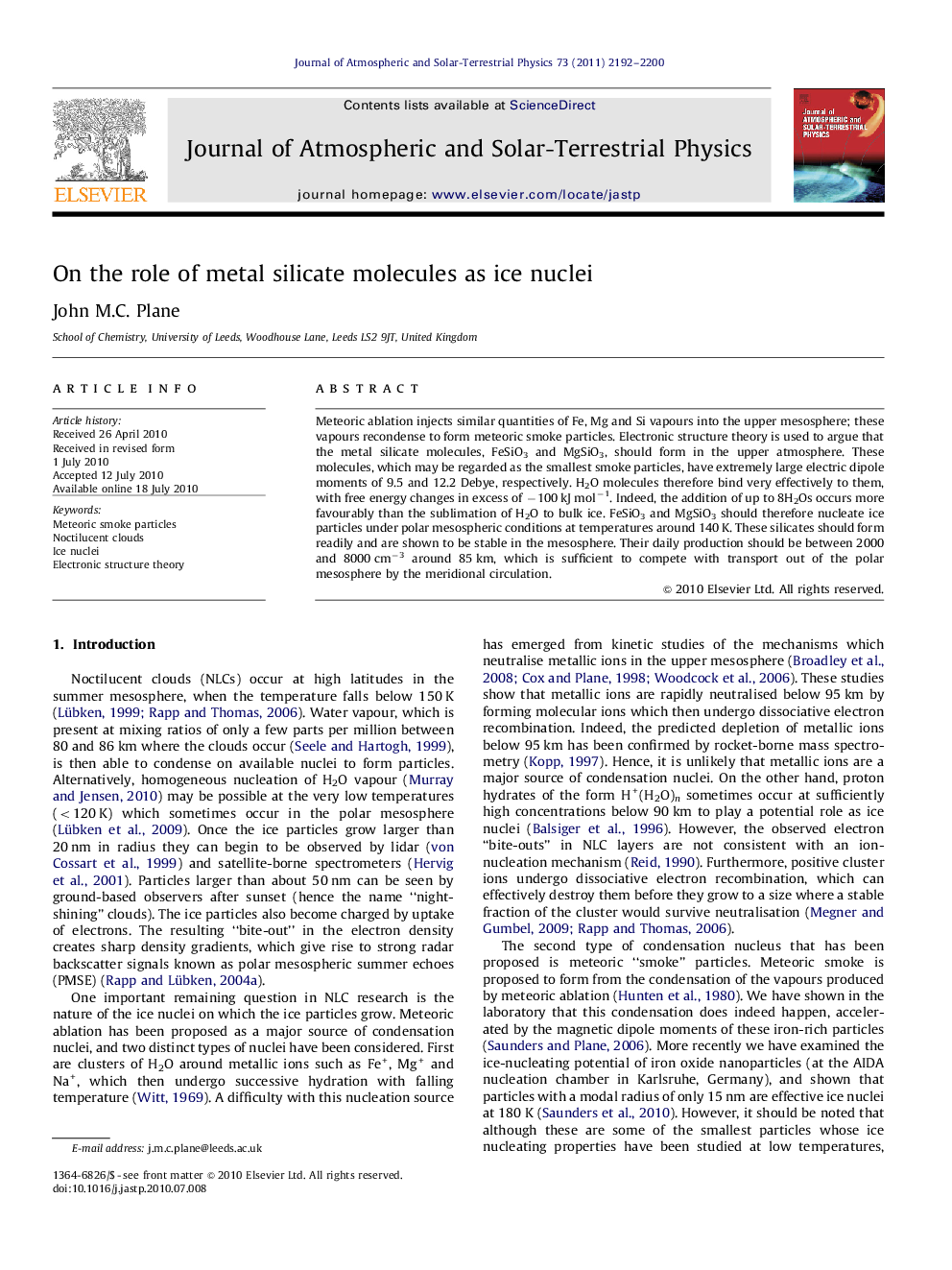| Article ID | Journal | Published Year | Pages | File Type |
|---|---|---|---|---|
| 8141112 | Journal of Atmospheric and Solar-Terrestrial Physics | 2011 | 9 Pages |
Abstract
Meteoric ablation injects similar quantities of Fe, Mg and Si vapours into the upper mesosphere; these vapours recondense to form meteoric smoke particles. Electronic structure theory is used to argue that the metal silicate molecules, FeSiO3 and MgSiO3, should form in the upper atmosphere. These molecules, which may be regarded as the smallest smoke particles, have extremely large electric dipole moments of 9.5 and 12.2 Debye, respectively. H2O molecules therefore bind very effectively to them, with free energy changes in excess of â100Â kJÂ molâ1. Indeed, the addition of up to 8H2Os occurs more favourably than the sublimation of H2O to bulk ice. FeSiO3 and MgSiO3 should therefore nucleate ice particles under polar mesospheric conditions at temperatures around 140Â K. These silicates should form readily and are shown to be stable in the mesosphere. Their daily production should be between 2000 and 8000Â cmâ3 around 85Â km, which is sufficient to compete with transport out of the polar mesosphere by the meridional circulation.
Related Topics
Physical Sciences and Engineering
Earth and Planetary Sciences
Geophysics
Authors
John M.C. Plane,
